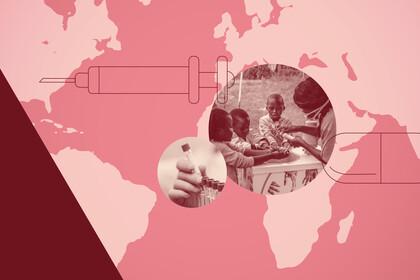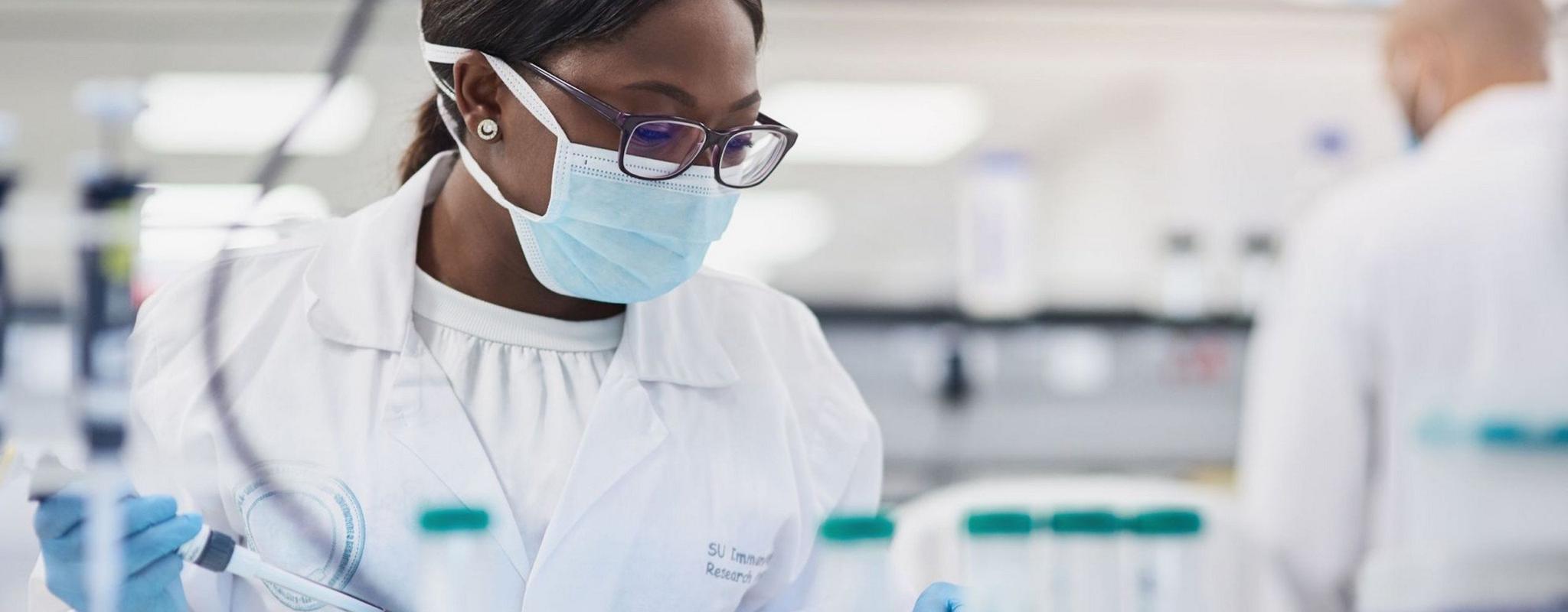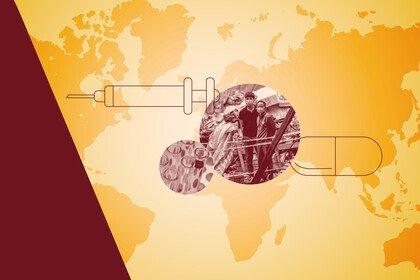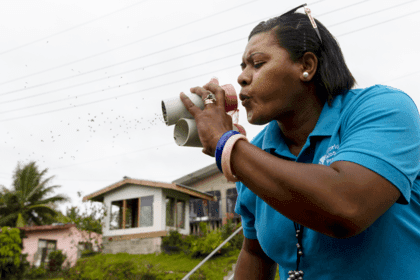
Scaling up African vaccine manufacturing capacity: perspectives from the African vaccine-manufacturing industry
This report gathers the perspectives of vaccine manufacturers in Africa, highlighting the challenges to scaling up vaccine manufacturing capacity and capabilities, and the areas where manufacturers most need support.
It provides a guide for public health initiatives and investment decisions while recognising that each manufacturer has its own needs and areas of focus.
What’s inside
- The perspective of African manufacturers on the barriers to scaling up vaccine manufacturing capacity.
- The major risks which impact manufacturers’ economic viability and prerequisites to create conditions for a sustainable ecosystem.
- A methodology to identify strategic priorities for vaccine manufacturing and vaccine research and development (R&D) in Africa.
- Priority areas for donors, African governments, continental organisations and global health organisations to support African manufacturers.
- Case studies on vaccine manufacturing, including the Coalition for Epidemic Preparedness Innovations (CEPI) R&D programme for a Lassa fever vaccine and South Africa’s government initiative to develop local biotechnology talent.
Who this is for
- Public, private and philanthropic funders
- Continental health organisations and the global health community
- African governments and policy makers
- African and global vaccine manufacturers
Key findings
In 2021, the African Union and Africa Centres for Disease Control and Prevention (CDC) established Partnerships for African Vaccine Manufacturing (PAVM). In March 2022, PAVM shared a bold goal in its continental strategy: by 2040, the African vaccine manufacturing industry would develop, produce and supply over 60% of the continent’s total vaccine doses – from a base of less than 1% today.
The past 18 months have produced many promising announcements and initiatives to develop vaccine manufacturing capacity in Africa. But African manufacturers say that economic viability is crucial and still needs to be demonstrated, with significant risks to overcome for the strategy to be successful in the long term.
African manufacturers identify three major risks to the desired economic viability:
-
Sustainability risk: The historic dynamic, described by Gavi, the Vaccine Alliance, as the “high-price and low-volume trap”, persists, and measures are required to change it. Manufacturing initiatives also remain uncoordinated, creating a risk of overcapacity.
-
Strategic risk: African manufacturers need to identify which vaccines and technology platforms to prioritise in the short- and mid-term. They would have to consider the manufacturing complexity of a product, and the current and future global supply and demand.
- Support risk: As the Covid-19 pandemic recedes, the attention and efforts being offered by national, continental and global stakeholders could also decrease.
African vaccine manufacturers have made a clear call to action to overcome existing concerns and accelerate change:
- African governments are expected to prioritise continental supply (even if more expensive) and put a supportive economic and regulatory environment in place.
- Global health organisations must introduce supportive procurement and financial mechanisms to create conditions for a sustainable vaccine manufacturing ecosystem.
- Donors need to offer sustained support to manufacturers, to help them overcome the obstacles to strengthening capabilities and scaling up capacity.
- Continental organisations must coordinate information sharing, provide market intelligence, and revisit strategic ambitions and priorities.
- African manufacturers should focus on strategic and realistic priorities, such as supply-constrained products with less complex end-to-end manufacturing processes.
"Once the system gets going and funding is there with designated and orchestrated governance, everyone will see the advantage of working together."
Downloads
Contact us
For more information, contact Deborah King, Research Lead, Vaccines at D.King@wellcome.org.


